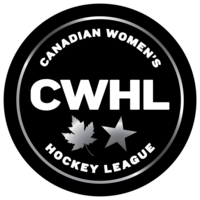
Photo from wikipedia
Objective: To examine the association between self-reported and parent-reported attention problems and hyperactivity and rates of injury and concussion in Canadian youth ice hockey players. Design: Secondary analyses of 2… Click to show full abstract
Objective: To examine the association between self-reported and parent-reported attention problems and hyperactivity and rates of injury and concussion in Canadian youth ice hockey players. Design: Secondary analyses of 2 prospective cohort studies. Setting: Canadian youth ice hockey teams. Participants: Ice hockey players (ages 11-17 years) were recruited by team, over 4 seasons (2011-2016). A combined 1709 players contributing 1996 player-seasons were analyzed (257 players participated in more than one season). Assessment of Risk Factors: Data were collected from preseason baseline questionnaires, including child and parent proxy forms of the Behavior Assessment System for Children, second edition. Main Outcome Measures: Injury and concussion rates and incidence rate ratios (IRR) comparing players with and without self-identified or parent-identified attention problems and hyperactivity, adjusted for covariates (ie, body checking policy, previous injury/concussion, and age) and a random effect for team, were estimated using multiple multilevel negative binomial regression. Results: When analyzed continuously, rates of concussion increased with higher self-reported and parent-reported measures of attention problems [IRRSELF = 1.025; 95% confidence interval (CI): 1.011-1.040; IRRPARENT = 1.032; 95% CI: 1.008-1.057]. Self-reported hyperactivity was significantly associated with concussion (IRR = 1.021; 95% CI: 1.007-1.035), but parent-reported hyperactivity was not (IRR = 1.005; 95% CI: 0.983-1.028). A T score ≥ 60 cutoff combining attention problems and hyperactivity scores (an estimate of probable attention-deficit hyperactivity disorder) was not significantly associated with rates of injury or concussion. Conclusions: Attention problems and hyperactivity may place youth ice hockey players at increased risk of concussion and injury. Preseason assessments could identify players for targeted concussion education and risk reduction strategies.
Journal Title: Clinical Journal of Sport Medicine
Year Published: 2022
Link to full text (if available)
Share on Social Media: Sign Up to like & get
recommendations!